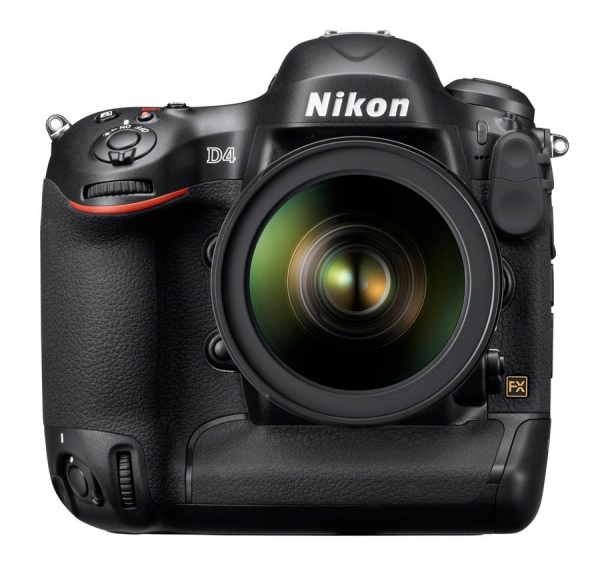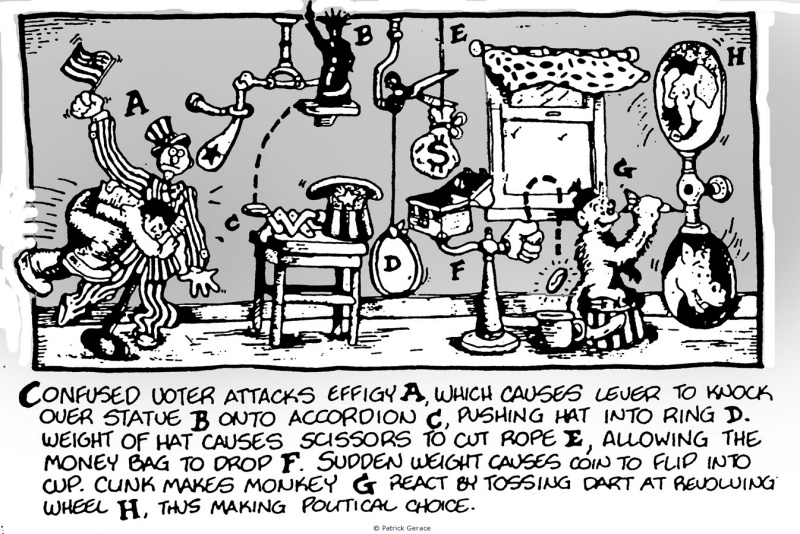No new thinking.
If you look at the hand-held SLR, it really has had no radically new thinking since Pentacon had the idea of installing a pentaprism and Pentax added an instant return mirror and auto diaphragm for largely uninterrupted viewing. That was 60 years ago. A few decades ago Honeywell invented autofocusing and now everyone (except Leica, of course, who helped invent it) has it. While those early variants were exclusively mechanical designs, the later ones have added batteries and motors to replace the thumb and fingers and a digital sensor replaces film. But the basic design, that of a flapping, noisy mirror in a bulky box, remains the same.
But as electronics have added a host of new capabilities, DSLR bodies have grown buttons, sockets and dials on seemingly every surface. Take a look at the new Nikon D4:

Nikon D4. Not a smooth surface in sight.
In fact, my first reaction on seeing this was to laugh. It is so exactly wrong in every design respect that the only thing that comes to mind is the inventions of Rube Goldberg:

Rube’s voting machine.
Sure, the Nikon can take a bazillion pictures a second, removing the last vestiges of skill from the sports picture taking process, and can be tuned to any number of picture taking situations, but the thinking is all wrong. If you watch a sports photographer at work, he never adjusts anything. He has his rig set for shutter priority automation and autofocus, carrying a spare battery and a few cards for image storage. Then he bangs away. Better still, watch his UK counterpart on the sidelines at a pro soccer game. Likely as not his camera, with one lens attached at all times, is shrouded with a plastic bag to keep out the rain and the only thing he does is point and shoot. Likewise the fashion photographer. The strobes are set just so, the camera’s settings are frozen and all he does is encourage the model to wet her lips or lean this way and that.
Both these professionals have no need of the myriad settings on their pro-DSLR body. They default to a menu of standards and care not one whit for all the options. And this is where high-end DSLR makers get it so wrong. Rather than recognize the working method of just about every snapper out there, they prefer to give you all the options, forcing you to decide, thus belaboring their designs with all those buttons and dials.
No question that these pros need the flexibility the body provides, but they need only one specific subset of all those options. So here’s how modern cameras should be designed:
- No flapping mirror. Cuts bulk, noise, vibration and wear.
- One dial, one button. Yup. That dial simply exists to alternate between a handful of custom settings. The button is for taking the snap.
- One fixed lens. You want wide, use the wide body. You want long, get the long one. Just like the guy on the sidelines for the soccer game. This greatly simplifies design and dramatically cuts bulk and weight.
- A smartphone wireless interface through which those customized settings are conferred to the body, obviating the need for any body controls.
- One large LCD display to show the settings dialed in under any custom choice.
None of the flexibility or ‘tuneability’ of the original concept is lost. Ergonomic form and function are restored. And weight is cut as all those mechanical adjusters, mirrors, prisms and interchangeable lenses disappear. Nothing really new here – it’s just a sophisticated version of what point-and-shoot cameras have been trying to achieve for ages with their mode dials – one setting for ‘landscapes’, another for ‘portraits’, a third for ‘sports’, and so on, but done at a far more accomplished level.
And realization of that concept is getting closer daily. The market is filling up with capable mirrorless designs, EVFs are improving by leaps and bounds, custom settings are here, but the smartphone interface is still largely lacking. You see it in some of the iPhone apps (like Camera+) which integrate the software with the hardware at an amateur level (allowing both pre-taking adjustments and post processing in one app), but there is no reason why this approach should not be extended to professional gear.
And unless the likes of Nikon, Canon and Sony start thinking Outside the Box, the will soon find themselves Inside the Box which is called Bankruptcy. Hey, it happened to Kodak. It can happen to you.